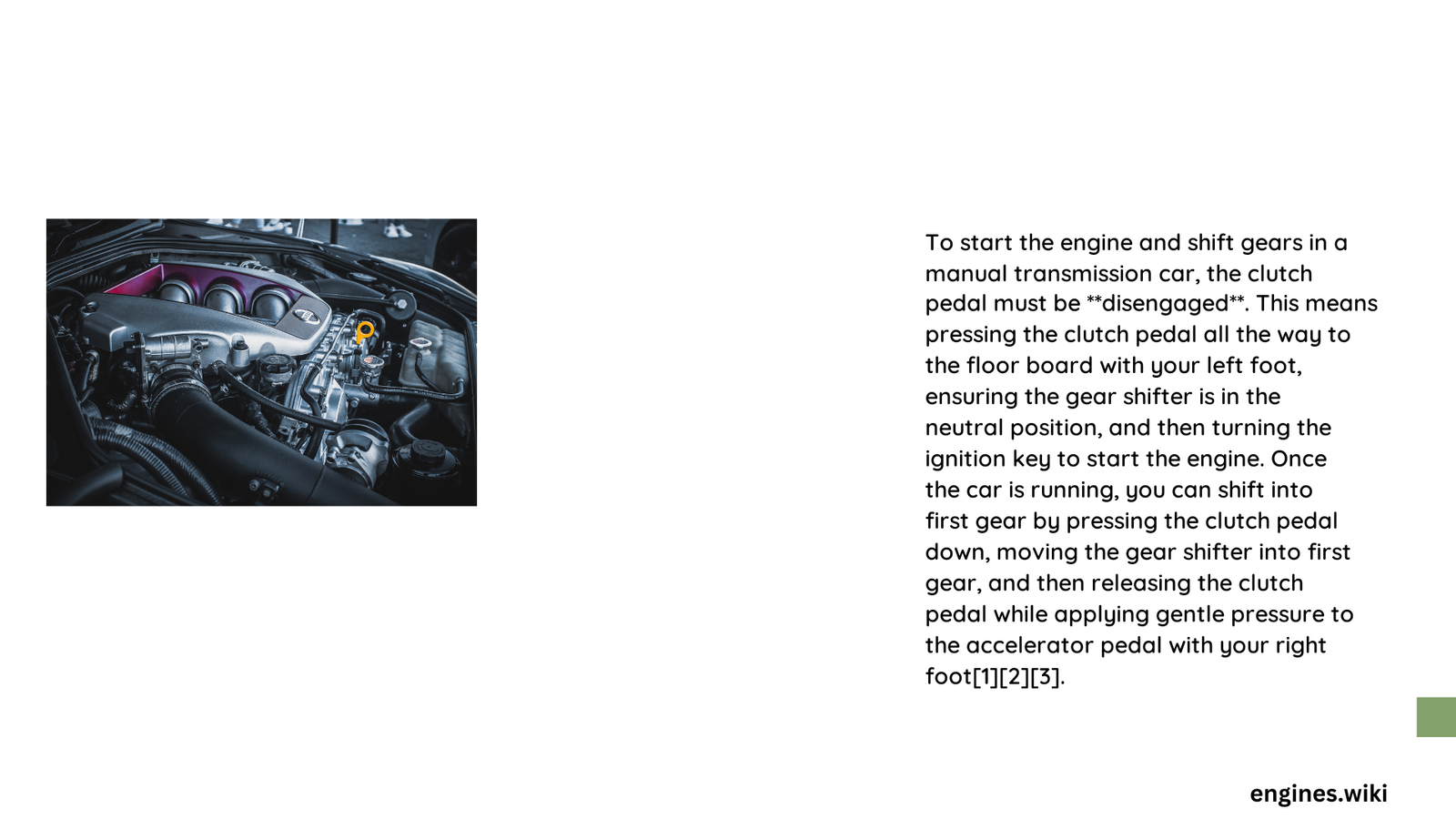Understanding the correct clutch position is crucial for starting a manual transmission engine and executing seamless gear shifts. Drivers must master the delicate balance of clutch engagement to prevent mechanical stress, ensure smooth vehicle operation, and protect critical transmission components.
What is the Correct Clutch Position for Engine Start?
When starting a manual transmission vehicle, the recommended clutch position involves fully depressing the clutch pedal. This critical action accomplishes several important mechanical objectives:
Why Full Clutch Depression Matters
- Reduces Starter Motor Load: Complete clutch depression minimizes resistance during engine startup
- Prevents Mechanical Strain: Disengages engine from transmission, reducing potential mechanical stress
- Facilitates Smooth Ignition: Allows easier engine cranking, especially in challenging temperature conditions
| Clutch Position | Engine Start Impact | Recommended Action |
|---|---|---|
| Fully Depressed | Minimal Resistance | Recommended |
| Partially Engaged | Higher Mechanical Stress | Not Recommended |
| Not Depressed | Maximum Transmission Load | Potentially Damaging |
How to Manage Clutch During Gear Shifting?

Proper clutch management during gear shifting involves precise control and understanding of the engagement process:
Clutch Pedal Techniques for Smooth Shifting
- Complete Disengagement
- Press clutch pedal fully to floor
- Separate engine from transmission
-
Prevent gear grinding
-
Identifying Bite Point
- Locate midpoint of clutch pedal travel
- Gradually release pedal
- Allow smooth power transfer
Critical Considerations for Clutch Operation
Drivers must be aware of several nuanced factors affecting clutch performance:
- Thrust Bearing Protection: Minimize unnecessary stress during startup
- Temperature Variations: Adjust technique based on environmental conditions
- Pedal Travel Sensitivity: Understand specific vehicle’s clutch characteristics
What Are Common Clutch Engagement Mistakes?
Avoiding these typical errors can significantly improve transmission longevity:
- Riding the clutch pedal
- Abrupt clutch release
- Incomplete pedal depression during gear changes
- Inconsistent engagement technique
Technical Insights into Clutch Mechanics
Modern manual transmission systems require precision and understanding:
Mechanical Dynamics
- Clutch Plate Interaction: Gradual engagement prevents mechanical shock
- Oil Pressure Considerations: Initial startup requires careful management
- Wear Reduction Strategies: Minimize unnecessary friction and stress
Expert Recommendations for Optimal Clutch Control
Professional drivers and mechanics suggest:
- Practice smooth, consistent pedal movement
- Listen to vehicle feedback
- Understand individual vehicle’s specific clutch characteristics
- Regular maintenance and professional inspection
Performance Optimization Techniques
- Develop muscle memory for precise clutch control
- Practice in controlled environments
- Understand vehicle-specific nuances
- Maintain consistent technique
Conclusion
Mastering clutch position requires patience, practice, and understanding of mechanical principles. By implementing these techniques, drivers can ensure smoother vehicle operation, reduced mechanical wear, and enhanced driving experience.
Pro Tips
- Always start in neutral gear
- Use full clutch depression during startup
- Release clutch smoothly during gear changes
- Pay attention to vehicle-specific requirements
Reference:
– Grassroots Motorsports Forum
– Stick Shift Driving Academy
– Manual Transmission Techniques
